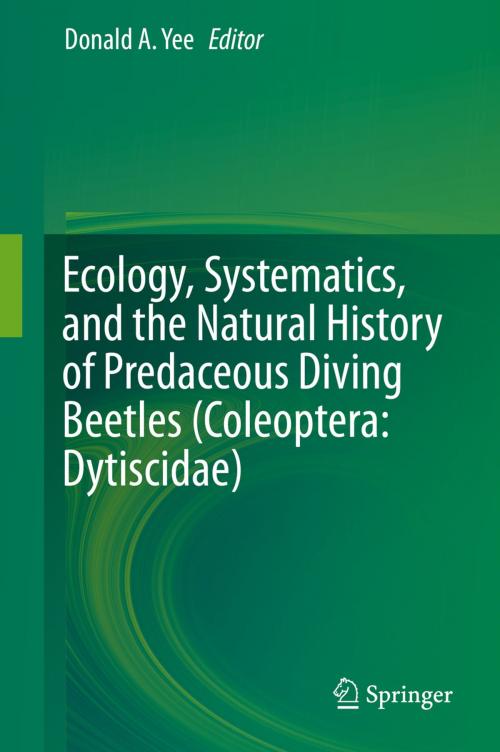Ecology, Systematics, and the Natural History of Predaceous Diving Beetles (Coleoptera: Dytiscidae)
Nonfiction, Science & Nature, Science, Biological Sciences, Entomology, Ecology| Author: | ISBN: | 9789401791090 | |
| Publisher: | Springer Netherlands | Publication: | July 14, 2014 |
| Imprint: | Springer | Language: | English |
| Author: | |
| ISBN: | 9789401791090 |
| Publisher: | Springer Netherlands |
| Publication: | July 14, 2014 |
| Imprint: | Springer |
| Language: | English |
Predaceous diving beetles (Coleoptera: Dytiscidae) constitute one of the largest families of freshwater insects (~ 4,200 species). Although dytiscid adults and larvae are ubiquitous throughout a variety of aquatic habitats and are significant predators on other aquatic invertebrates and vertebrates, there are no compilations that have focused on summarizing the knowledge of their ecology, systematics, and biology. Such knowledge would benefit anyone working in aquatic systems where dytiscids are an important part of the food web. Moreover, this work will allow a greater appreciation of dytiscids as model organisms for investigations of fundamental principles derived from ecological and evolutionary theory. Contributed chapters are by authors who are actively engaged in studying dytiscids and each chapter offers a synthesis of the current knowledge of a variety of topics and will provide future directions for research.
Predaceous diving beetles (Coleoptera: Dytiscidae) constitute one of the largest families of freshwater insects (~ 4,200 species). Although dytiscid adults and larvae are ubiquitous throughout a variety of aquatic habitats and are significant predators on other aquatic invertebrates and vertebrates, there are no compilations that have focused on summarizing the knowledge of their ecology, systematics, and biology. Such knowledge would benefit anyone working in aquatic systems where dytiscids are an important part of the food web. Moreover, this work will allow a greater appreciation of dytiscids as model organisms for investigations of fundamental principles derived from ecological and evolutionary theory. Contributed chapters are by authors who are actively engaged in studying dytiscids and each chapter offers a synthesis of the current knowledge of a variety of topics and will provide future directions for research.















